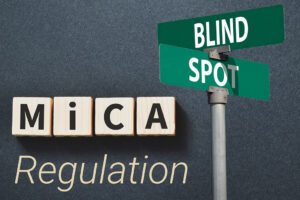Typically, 2024 was a turning point for the Cryptocurrency space in Europe. This is especially true with the European Banking Authority guidelines, a set of strict rules for watershed improvements in the compliance mechanisms. This will ensure that EU countries operate in a more transparent and safe financial system in the long run.
These changes are not merely the shifts along bureaucratic lines but the need arising from the crypto industry’s development and the risks involved.
With the December 2024 compliance deadline, PSPs and Crypto Asset Service Providers (CASPs) like DNA Crypto needed to meet these standards.
Why do the New Guidelines Matter?
The most recent development from the EBA requires PSPs and CASPs to have efficient screening mechanisms to enforce restrictive measures, especially in AML/CFT measures. The focus is clear: to mitigate the threats from using Crypto mining concerning the criminals or entities facing EU sanctions.
In the past, operational and reputational risk jeopardised financial institutions because of internal governance shortcomings. To address these vulnerabilities, the EBA lays down a roadmap for implementing these measures into governance frameworks to improve systemic resilience across the EU.
The guidelines also incorporate knowledge from prior cases in which compliance with the rules and regulations failed, resulting in major fines and eroded the efficacy of sanctions. Hence, aligning with international AML and CFT standards, the EU is developing positive measures to safeguard its financial sector and encourage the use of digital assets.
The Growing Influence of Europe in the Crypto Market
Europe is at the forefront of the development and innovation of the crypto industry. Between July 2023 and June 2024, the region had an on-chain value of $987.25 billion, making it the second-largest crypto market globally. The UK is the key player as it amassed $217 billion in crypto assets in the same period, a big fish in this trade of Stablecoins and merchant services.
It goes without saying that Stablecoins dominate Europe and make up almost half of its volume, according to the analytical data. Transactions below $1 million have increased 2.5% more than in North America.
To this, new legislation, like the European Union’s Markets in Crypto-Assets (MiCA) regulation, which came into force in December 2024, will catapult these investments even further. These regulations define how Stablecoins can be issued and stipulate the foundation of supervision over other providers in the crypto-asset marketplace.
What PSPs and CASPs Need to Do
In a bid to comply with setting EBA’s guidelines, PSPs and CASPs must:
- Ensure all user data is accurate and up to date.
- Identify and mitigate attempts to bypass regulatory frameworks.
- Ensure Internal Controls to strengthen governance and risk management policies to prevent lapses.
Non-compliance is not an option, as failure to adhere to these standards could result in hefty penalties and/or exclusion from the EU’s financial markets—a risk no serious crypto provider can afford.
In a Nutshell
The EBA’s guidelines indicate the new direction the European crypto industry should expect to face. With the EU implementing coherent cryptocurrency principles to achieve a transparent and compliant Blockchain-based environment, 2025 signals its path to lead the new wave of digital finance. The path forward is rocky, but the end goal is a more secure and less volatile ecosystem for digital business.
Image Source: Adobe Stock
Disclaimer: This article is purely for informational purposes. It is not offered or intended to be used for legal, tax, investment or financial advice.












